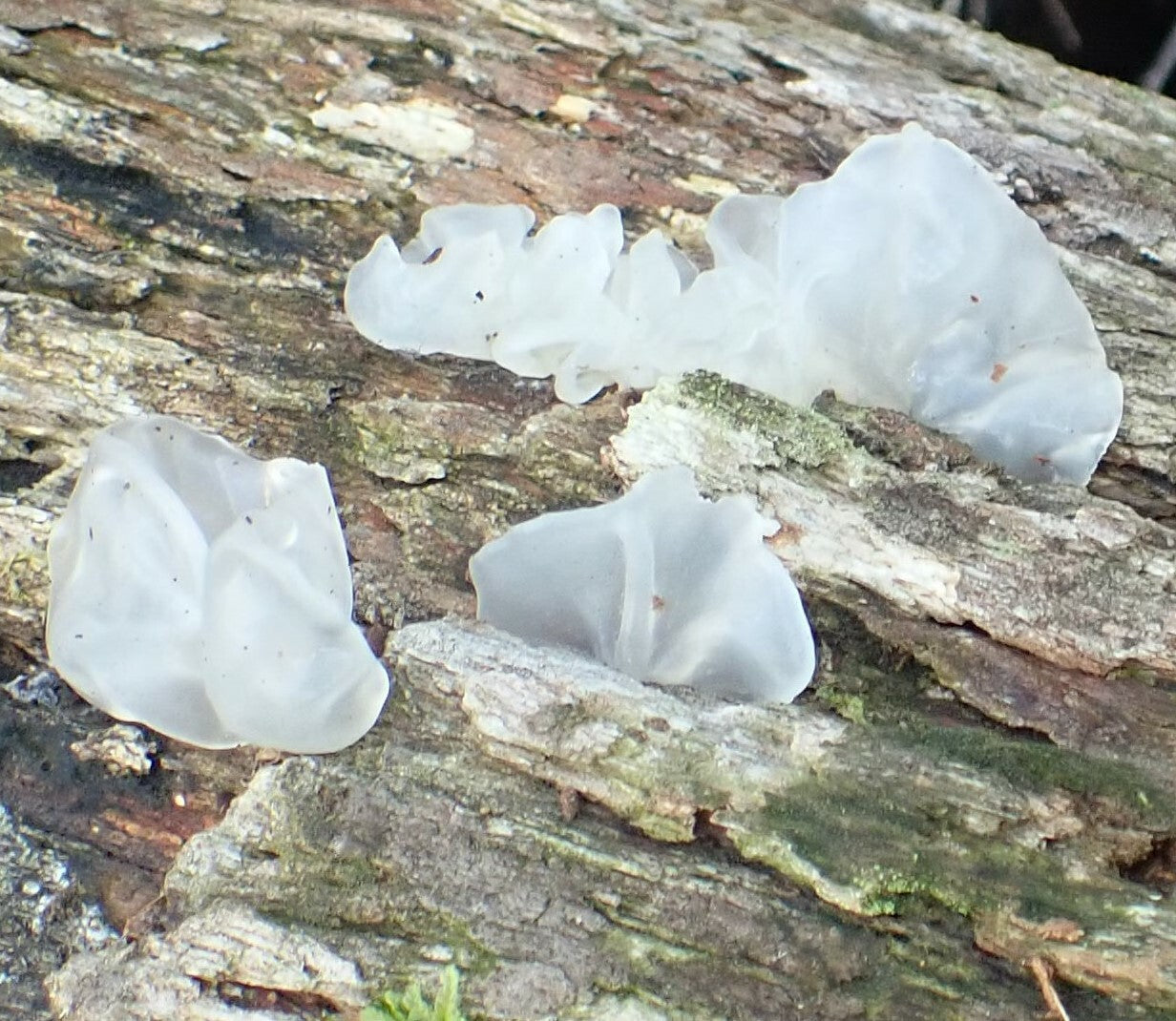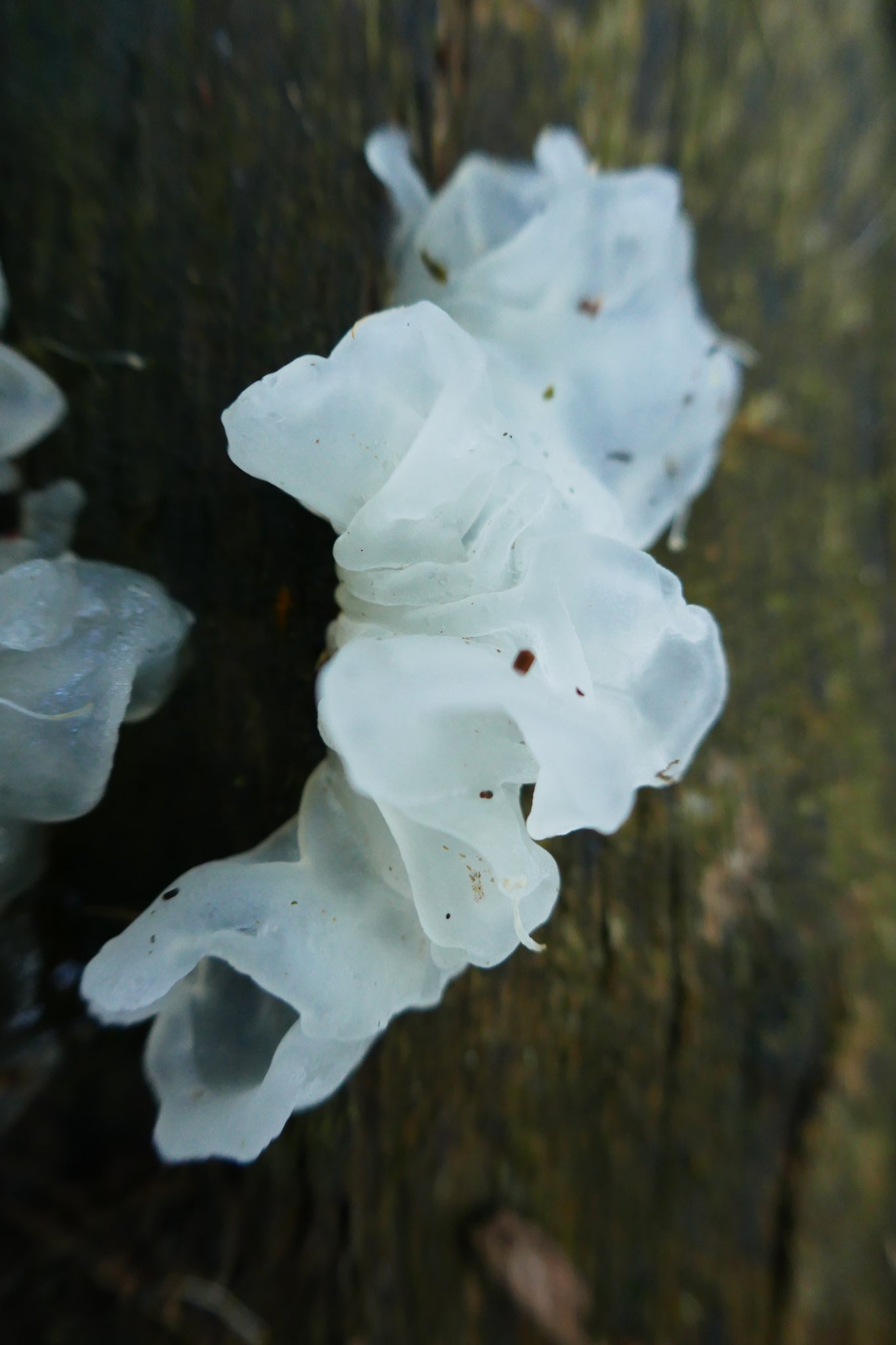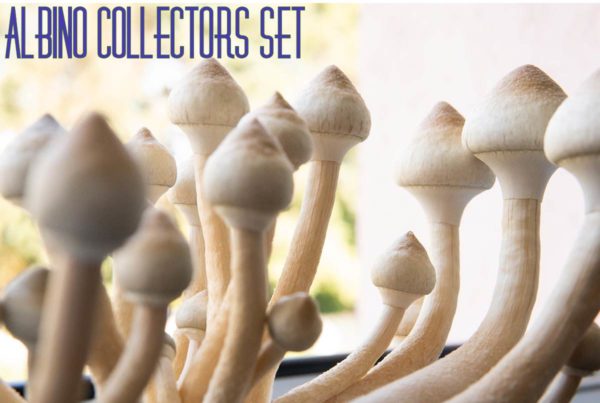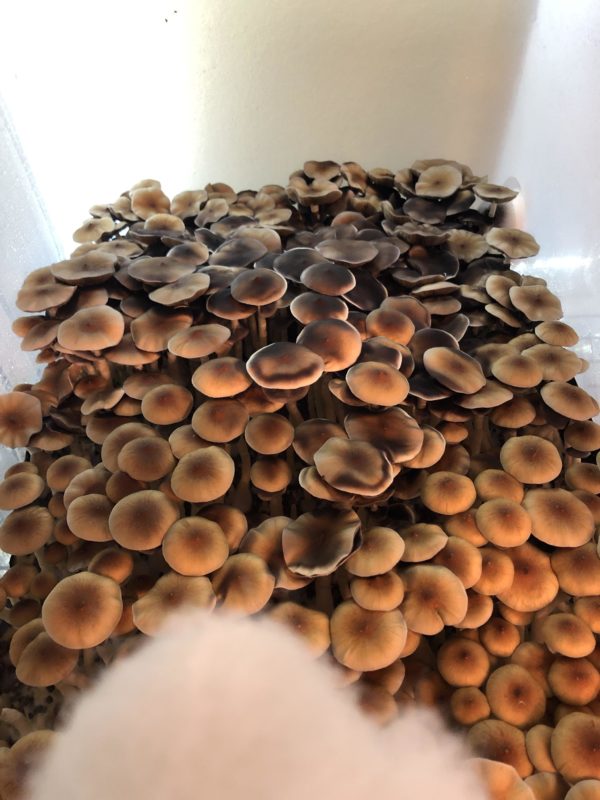Description
| Species | Tremella fuciformis |
| Difficulty ℹ️ | 🍄🍄🍄 |
| Spore Coloration | White |
| Ecology | Parasitic |
| Edibility | Choice |
Tremella fuciformis is a species of fungus; it produces white, frond-like, gelatinous basidiocarps (fruiting bodies). It is widespread, especially in the tropics, where it can be found on the dead branches of broadleaf trees. This fungus is commercially cultivated and is one of the most popular fungi in the cuisine and medicine of China. Tremella fuciformis is commonly known as snow fungus, snow ear, silver ear fungus, and white jelly mushroom.
Tremella fuciformis is a parasitic yeast, and grows as a slimy, mucous-like film until it encounters its preferred hosts, various species of Annulohypoxylon (or possibly Hypoxylon) fungi (available here), whereupon it then invades, triggering the aggressive mycelial growth required to form the fruiting bodies.
Tremella fuciformis has been cultivated in China since at least the nineteenth century.: 159 Initially, suitable wooden poles were prepared and then treated in various ways in the hope that they would be colonized by the fungus. This haphazard method of cultivation was improved when poles were inoculated with spores or mycelium. Modern production only began, however, with the realization that both the Tremella and its host species needed to be inoculated into the substrate to ensure success. The “dual culture” method, now used commercially, employs a sawdust mix inoculated with both fungal species and kept under optimal conditions. The most popular species to pair with T. fuciformis is its preferred host, Annulohypoxylon archeri. Estimated production in China in 1997 was 130,000 tonnes. T. fuciformis is also cultivated in other East Asian countries, with some limited cultivation elsewhere.
In Chinese cuisine, T. fuciformis is traditionally used in sweet dishes. While tasteless, it is valued for its gelatinous texture as well as its supposed medicinal benefits. Most commonly, it is used to make a dessert soup called luk mei (六味) in Cantonese, often in combination with jujubes, dried longans, and other ingredients. It is also used as a component of a drink and as an ice cream. Since cultivation has made it less expensive, it is now additionally used in some savoury dishes. In Vietnamese cuisine, it is often used in Chè (Vietnamese pronunciation: [cɛ̂]), a Vietnamese term that refers to any traditional Vietnamese sweet beverage, dessert soup or pudding.









Reviews
There are no reviews yet.